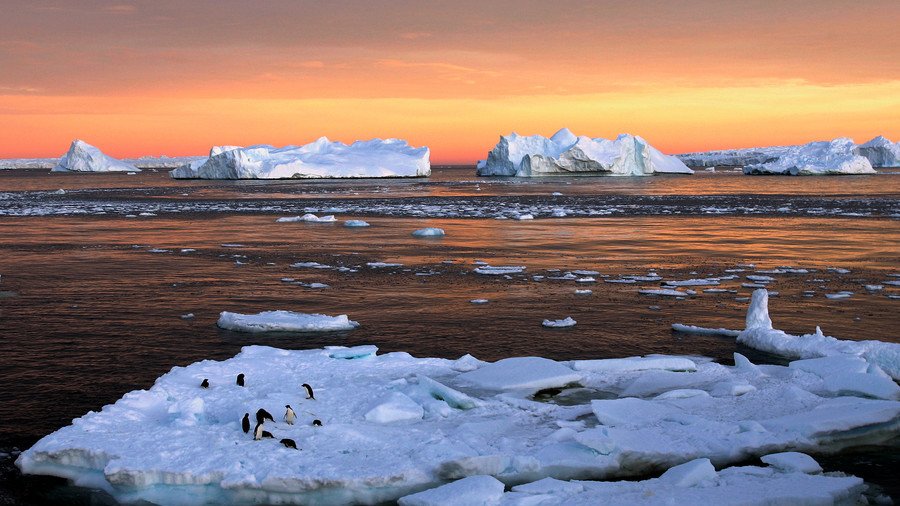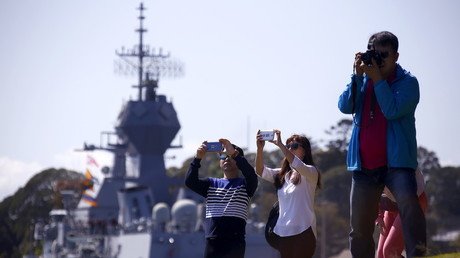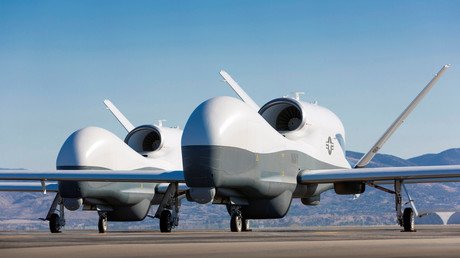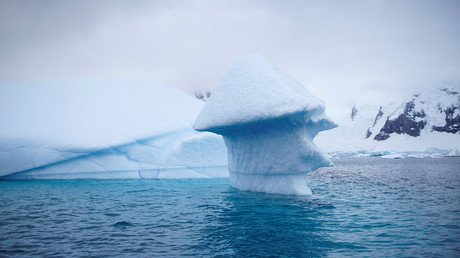New Zealand sets sights on Antarctica as concern grows over China’s expanding influence

New Zealand is not typically considered a major colonial power, but the country’s recent defense policy statement revealed hidden aspirations of expansion in one geostrategic area in particular: Antarctica.
“It is often not known,” according to New Zealand’s Defense Minister Ron Mark, that its military’s “biggest deployment is to Antarctica, consisting of up to 220 personnel and different airlift platforms.”
Every year, the New Zealand Defense Force (NZDF) supposedly deploys personnel and aircraft to the continent with the aim of helping to “advance globally important research.” Mark made the remarks while unveiling the 2018 Defense Policy Statement in Wellington last July.
In fact, New Zealand troops have been serving in Antarctica for decades. Some personnel now fear they may have cancer due to an American nuclear power plant at McMurdo Station, which began to leak, killing US servicemen some time later. New Zealand troops continue to serve in McMurdo Station to this day, which is the hub of United States’ scientific activity in Antarctica, playing host to more than 1,000 scientists and support personnel during the summer season. Earlier this year, most experienced NZDF drivers headed to Antarctica to haul 12 months of supplies, construction material, scientific equipment, vehicles, general supplies, and maintenance equipment.
New Zealand isn’t going anywhere anytime soon, as it looks to set up shop on the continent for years to come. Even those of you based in New Zealand must be wondering why this is hardly ever spoken about, even as the previous 2016 White Paper on Defense stated that it “is a fundamental duty of any New Zealand government to protect the country’s people and its resources [and] to maintain New Zealand’s right of sovereignty in the Ross Dependency of Antarctica.”
I wonder how many of you would expect a New Zealand Defense Policy Statement to even mention Antarctica, let alone devise an entire strategy on how to contain the continent for itself.
“It is a fundamental responsibility of the New Zealand government to protect New Zealand’s people, prosperity, territory, sovereignty and resources; uphold New Zealand’s constitutional obligations to the Cook Islands, Niue and Tokelau; and maintain New Zealand’s claim to territorial sovereignty in the Ross Dependency of Antarctica,” the Policy Statement reads, reiterating the 2016 White Paper in slightly different terms.
“Interest by both state and non-state actors in Antarctica and its surrounding waters will likely grow over the coming years,” it continues. “This will lead to increased congestion and crowding, as well as pressure on key elements of the Antarctic Treaty System, such as the prohibition on mineral extraction.”
Congested and crowded? Are we still talking about Antarctica, or is there something else at play here? As Patrick Flamm lamented in the Diplomat, it takes a lot “for a continent nearly twice the size of Australia, with no native human population apart from several thousand, mostly seasonal, scientists and support personnel, to get crowded and congested.”
According to the Policy Statement, “international interest” in Antarctica is growing, therefore it will be critical for New Zealand to ensure peace and stability on its southern flank and in its very own Ross Dependency. New Zealand also has a “direct interest in stability on the Antarctic continent and in the Southern Ocean,” the report states, because, as you undoubtedly know, Antarctica is well known as a hotbed of instability, insecurity and terrorism, right behind Iraq and Syria. New Zealand also sees itself as playing a vital role in providing “awareness” and advocating “for transparency of all parties’ activities” in Antarctica, clearly fearing that other countries may contest its standing there.
Despite its best efforts to paint the role of the NZDF in Antarctica as solely being present to protect its civilian population based in Antarctica, or solely as a “science project,” the document struggles to hide exactly what the NZDF has in mind for the future of the region. It should be quite telling that New Zealand plans to deploy the HMNZS Aotearoa, still currently under construction, which will provide New Zealand with an “ice-strengthened maritime sustainment capability that can be used to support a range of operations globally, from replenishment at sea of deployed naval combat forces, through enabling joint force operations to supporting New Zealand government activities in Antarctica and the Southern Ocean.”
“States are planning and building new facilities,” the Policy Statement further warns. “The planned Italian runway in Terra Nova Bay could support broader activities by a range of states interested in the region. China has begun work on its fifth base in Antarctica, on Inexpressible Island.”
Those of you paying attention probably have a fair idea of where this is headed. As I have warned previously, the defense document itself essentially sets the stage for a confrontation with China, though the media will never tell you that. So, where does Antarctica fit into New Zealand’s geopolitical struggle with China’s expanding influence in the Pacific region?
In August last year, a report from the Australian Strategic Policy Institute warned that Australia’s leadership role was being eroded because of long-term under-investment at a time when other countries (read: China) were expanding their influence in the Pacific region. The report went on to warn that “China has conducted undeclared military activities in Antarctica, is building up a case for a territorial claim, and is engaging in minerals exploration there.” According to the report, three out of four of China’s Antarctic bases and two of its field camps are in the Australian Antarctic Territory, further warning that China’s presence there is aimed at competing for resources, including minerals, hydrocarbons, fishing, tourism, transport routes, water and bioprospecting.
The report stated that China’s military activities in Antarctica have the potential to shift the strategic balance that has maintained peace in the Asia-Pacific, as well as in Antarctica, for nearly 70 years.
The author of this report, Professor Anne-Marie Brady of the University of Canterbury, released a separate report specific to the New Zealand context, which warned that “New Zealand must rethink its assessment of risk in Antarctica and devise a strategy to protect its interests there.” Bear in mind, however, that this report was released at a time when the New Zealand government’s Defense Policy defined China as a “key strategic partner” for New Zealand. The 2018 Policy Statement makes no such reference – a clear indication that China is now to be viewed as a potential adversary.
I mean, there must be a reason why the New Zealand Air Force has been training for a potential Antarctic crash that may result in an aircraft going down in enemy territory. Enemy territory? What enemies should we expect to find on an entire continent of ice, widely described as the world’s largest desert. To the New Zealand government and the rest of the powers who have Antarctica in their sights, it is anything but a large block of ice.
Antarctica has huge potential economic value, particularly regarding its mineral and oil resources. New Zealand knows this, the United States knows this. Hell, even South Korea knows this. The Ross Sea – to which New Zealand has a pending claim of its own – is suspected of possessing one of the world’s largest oil reserves after Saudi Arabia. The Ross Dependency contains a land area that could fit New Zealand’s entire country in at least three times over. It is the most important access point to the continent, including access to the Ross Sea. New Zealand is not going to give up this strategic area so easily, as one would expect.
“Antarctic geopolitics are shifting rapidly and the clash between those states who promote environmental protection in Antarctica and those who are focused on accessing available resources there is becoming more acute,” Professor Brady warned in her 2017 report. “China is now a member of a unique club of nations, the polar states: those few countries who are powerful at the Arctic and the Antarctic. Polar states are the global giants, strong in military, scientific, and economic power…China has global interests and is well on the way to becoming a global great power. In order to succeed in this evolution it must be dominant in the polar regions.”
New Zealand, on the other hand, may find itself struggling to compete with China in this regard. It may have the upper hand for the time being, given its military has been involved in Antarctica for over 50 years and has a claim to at least 15 percent of the territory. However, this is the first time that New Zealand has openly treated China as an adversary in a national defense document signed off by all of New Zealand’s government ministries, indicating that we may be witnessing an overt geopolitical shift in alliances as countries begin to assert their competing claims over geostrategic areas in plain view, all the while the media insists on talking about Donald Trump, Russia, and not much else.
Like this story? Share it with a friend!
The statements, views and opinions expressed in this column are solely those of the author and do not necessarily represent those of RT.


















